-
Car Reviews
- All reviews
- Midsize SUVs
- Small cars
- Utes
- Small SUVs
- Large SUVs
- Large cars
- Sports SUVs
- Sports cars
- Vans
Latest reviews
- Car News
-
Car Comparisons
Latest comparisons
- Chasing Deals
Hallowed off-roading marque taps heritage hard with its first-ever fully electric model delivered as pricey front-driven compact urban runabout
Avenger. Sight unseen, one might imagine capes and superpowers. Or 35-inch mud-kickers and gun racks. Or a horror-filled lineage of rubbish Dodge four-door sedans.
But as pilfered by Dodge’s former Chrysler cousin Jeep, the Avenger nameplate is affixed to a subcompact front-drive SUV. And in Australia, it has arrived in purely electric form.
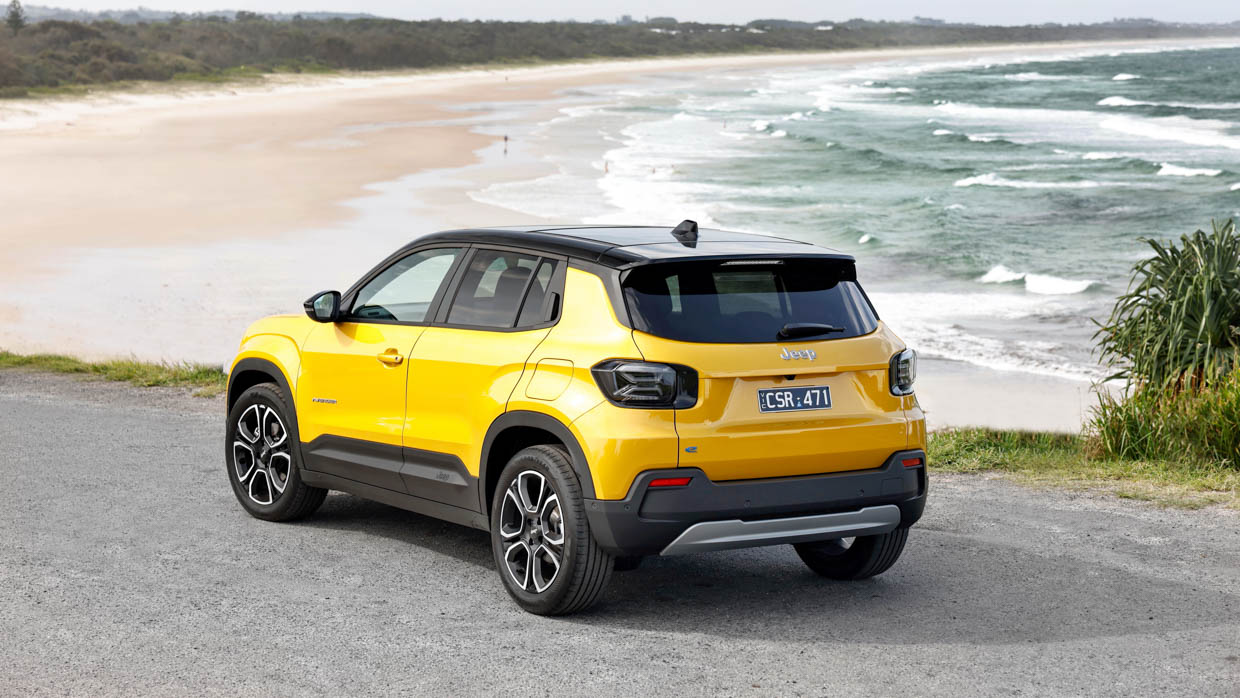
Essentially, the Avenger is Jeep’s rich American all-terrain legacy repurposed and downsized for the European urbanite. It’s designed in Italy, built in Poland and, unlike its slightly larger (compact) ICE-derived Compass, the Avenger doesn’t appear on the US Jeep website at all.
While Avenger is now offered in mild-hybrid turbo-petrol front- and ‘4xe’ all-wheel-drive guises in Europe, Australia only gets the original pure-electric guise that first lobbed in 2023. ‘Our’ Avenger was and remains Jeep’s first and only electric model to date.
Underpinned by the Stellantis mothership’s eCMP2 platform that’s shared with likes of Alfa Romeo Junior and Fiat 600, it’s unsurprising that Avenger shares absolutely nothing with a Wrangler, save for some vague family stylisms here (seven-slot grille) and there (trapezoidal wheel arches). The tail lights ape jerry cans from a 1940s Willys, apparently…

Needless to say, Avenger is less American apple pie and more a petite slice of Italian tiramisu…
So where does Jeep’s local arm want to pin its electric hopes for the Australian urbanite buyer?
It was from $53,990 when Avenger’s entry price was announced in March. But as Jeep Australia sat sideline watching EV pricing’s current race to the bottom, the three variant lineup copped a chop and now starts from $49,990 for the base Longitude.

It’s joined by the mid-range Limited, at $53,990 list, while the flagship Summit ‘peaks’ at $60,990…or around $66K with on-roads. Our ‘Sun’ premium paint adds a further $990.
So the tiny Polish-built newcomer is priced well above the cheap Chinese-sourced competition and, in Avenger’s highest rung, is proper (also Chinese-made) Tesla Model Y territory. And yet its petite (4080mm long) size makes it three classes smaller. So the Jeep is perhaps more of a direct rival to the (yet-another-Chinese-built) Volvo EX30.
In fact, until the Hyundai Inster arrives, Jeep says the Avenger will remain Australia’s only subcompact electric SUV. But that’s a helluva price for such exclusivity in such a small package.
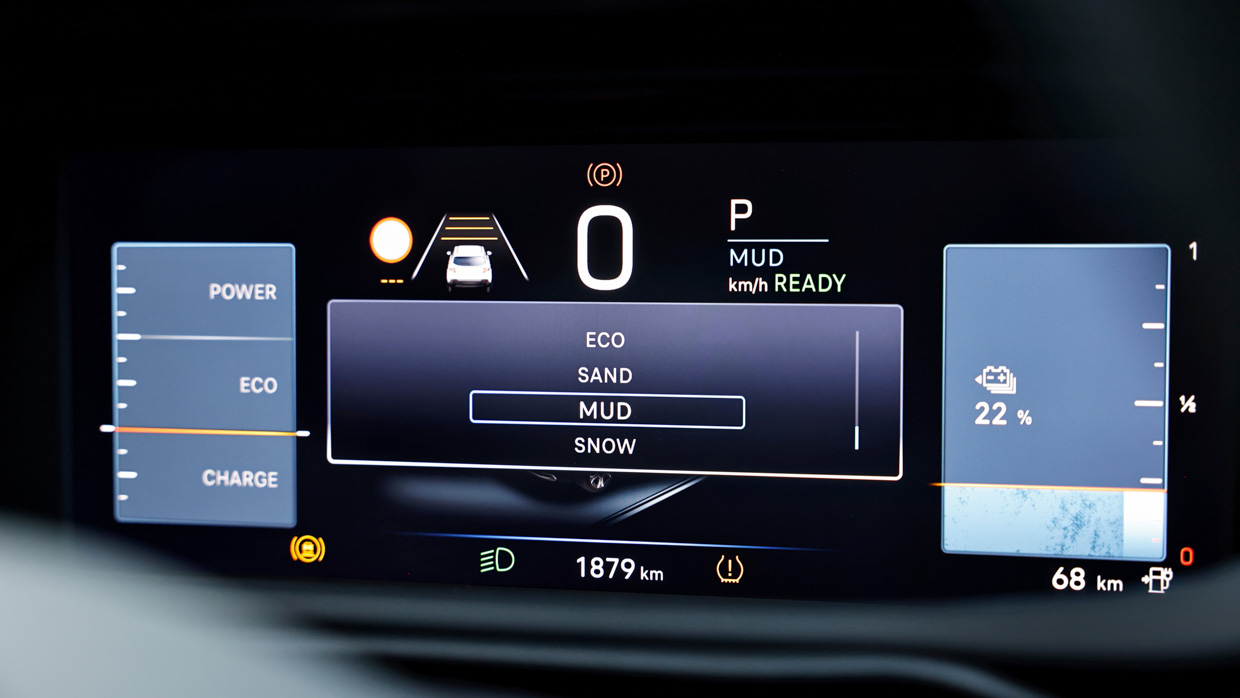
Beyond exclusivity and Jeep ‘heritage’ of sorts, the Avenger brings some firmly suggested multi-terrain capabilities: Selec-Terrain smarts with Sand, Mud and Snow modes; plastic cladded around its bodywork perimeter; impact-resistant lighting; 209mm of ground clearance; 20 degrees of approach and breakover angle, and 32deg of departure, etcetera.
Much of this, though, is a direct benefit of large 18-inch wheels with 215mm Tarmac rubber pushed to the extremities of the Avenger’s petite four-metre-long form, leaving precious little front and rear overhang and yielding fetchingly handsome looks.
But, really, this Jeep isn’t all-terrain in, well, a Wrangler-like sense. You’d only be brave enough to take this front-drive EV to the Nullabor if that happened to be the name of a trendy restaurant in Prahran or Surry Hills.
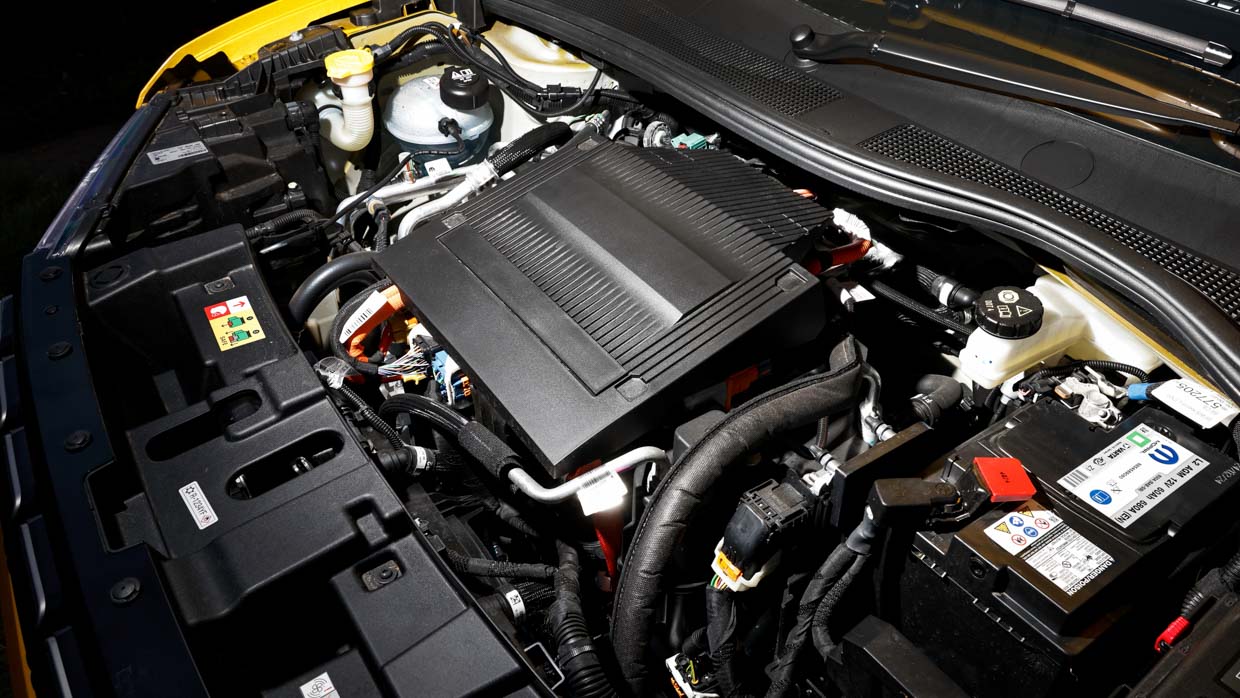
Jeep doesn’t spruik Avenger’s EV credentials loudly and for solid reasons. At 115kW and 260Nm, it’s no electro powerhouse.
That’s full-welly in Sport drive mode. The default Normal nobbles outputs to 80kW/220Nm, while Eco drops further to just 60kW/180Nm…though peak measures are still available on tap at ‘kick down’.
Nor is its 54kWh batteries prodigious, or its 100kW DC charging peak much to boast about. Even range, a claimed 390 kilometres WLTP – but closer to 360km real-world as evidenced during our time with the car – is on the modest size for a city slicker. If Avenger was fully equipped for tough terrain, you wouldn’t be compelled to venture too deep into it.
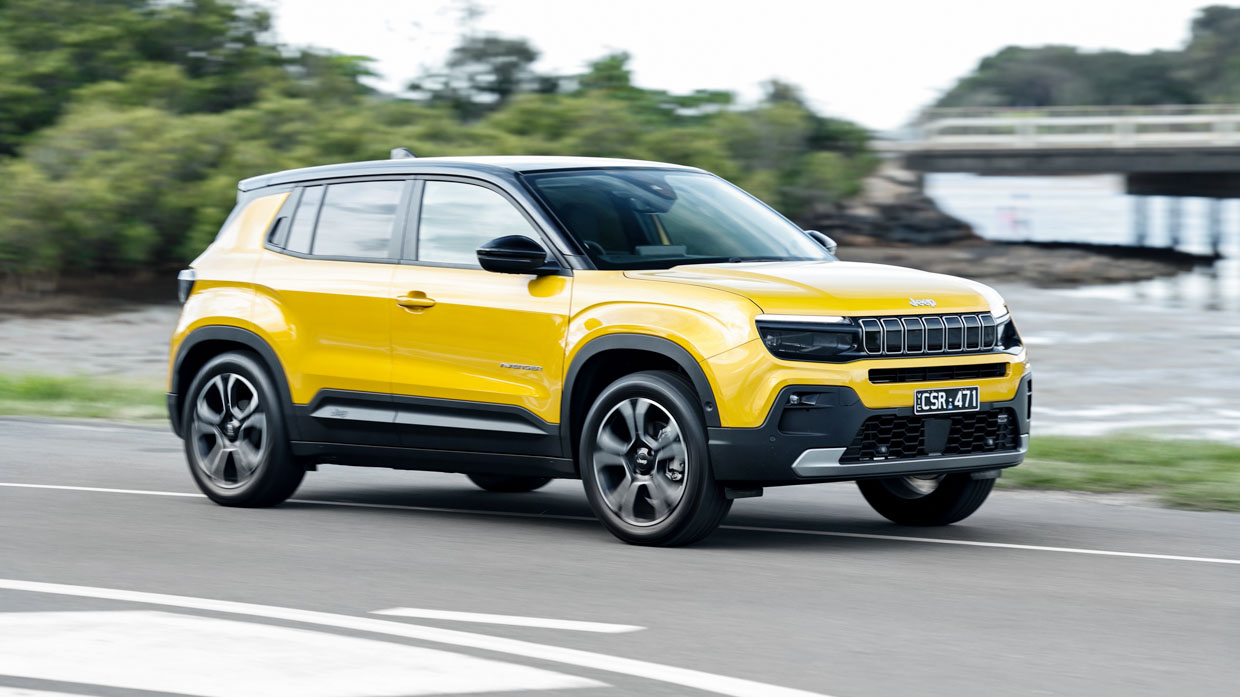
Once you do hit the sealed stuff at least, the Avenger, sampled at the local launch in regional northern New South Wales in the ultimate Summit guise, does quite nicely with what it’s equipped with.
Moments into the Avenger driving experience and it’s clear that the steering is light and mostly inert and the brake pedal is mushy and lacking much confidence underfoot. And its default Normal drive mode wants to meander rather than jump into the motor’s 260Nm.
But once you get moving, the tiny electric SUV settles into a rhythm that’s instantly a couple of grades above stature-challenged Chinese price-busters or almost anything else wearing a Jeep badge.

The chassis character is a dead giveaway of the Avenger’s European origins. Its compliance is very nicely judged, the body control is crisp and taut, and it points with an enthusiasm and fluidity that suggests that the dynamics have benefitted from the sort of polish rarely found in smaller-sized EVs.
There’s a real sportiness in its step, one that’s more planted than the fun if wayward BYD Atto 3 and crisp if slightly stunted Cupra Born. And a lot of it has to do with its kerb weight, which at 1520kg is significantly more lightweight than even the MG4 Excite 51, which has been something of a featherweight touchstone for today’s EVs.
In Normal, it feels warm hatch quick, but in Sport the Avenger really starts to boogie like it’s 1976. And the refreshing bit is that the chassis is well up for the job once the red mist descends.
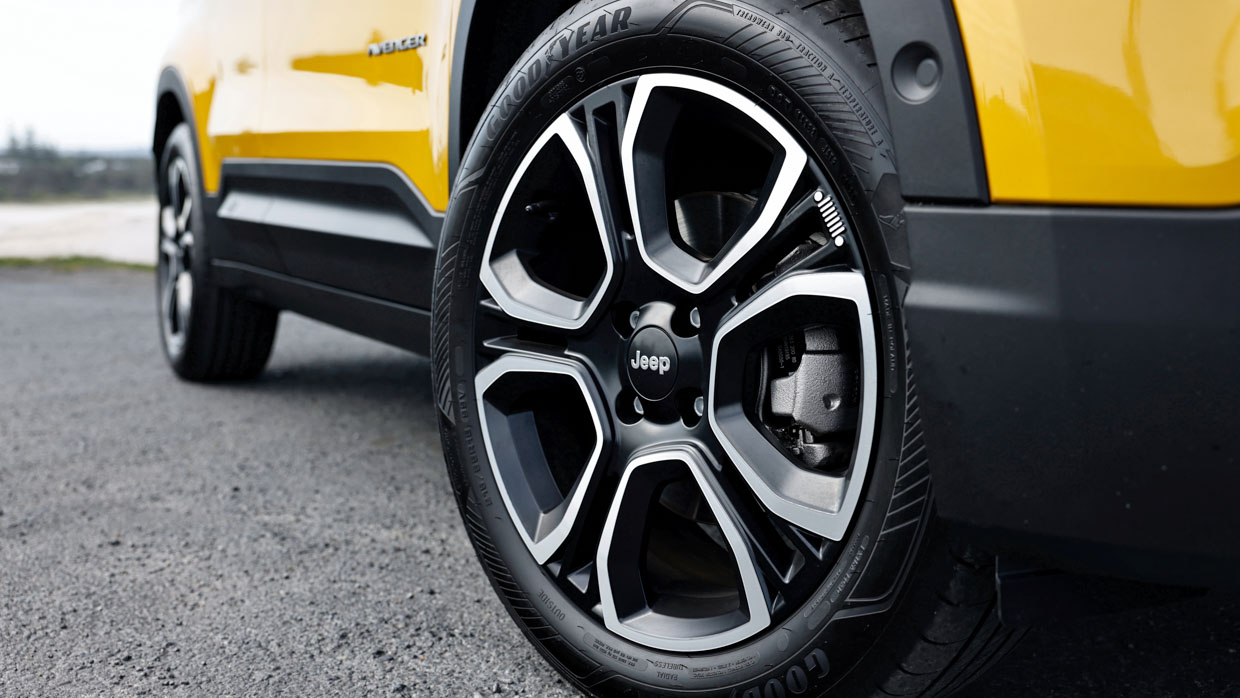
That low kerb weight combined with a resiliently flat cornering stance and 215mm low-profile 18-inch Goodyears – utterly huge for a tiny 1.5 tonne crossover – makes for some pretty handy point-to-point backroad pace.
It’s rewarding too, as Sport sharpens responses noticeably and also yields a semblance of weight and enthusiasm from the steering system. There’s good inherent balance to its manner as well when you’re punting with enthusiasm from one apex to another.
The front-driven hardware seems counterweighted to some extent by a split battery arrangement that locates some of the high-voltage power supply under the front seats and some across the rear axle – there’s no battery underneath row-two passenger feet, which is a boon for cabin packaging, but more on that later…
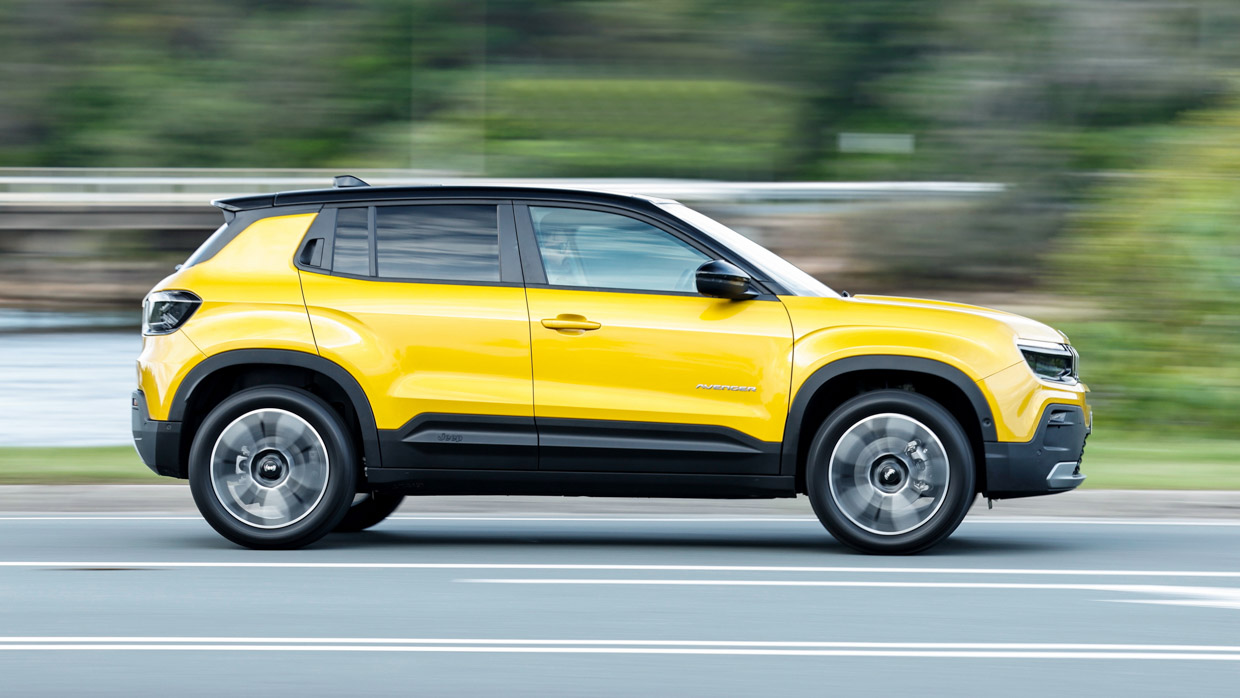
If there’s a blight on the on-road experience, it’s that the torsion beam rear end can jolt across firm bumps and even crash through if you catch both wheels over harder and sharper hits. On the 4xe hybrid in Avenger lineup not (yet) offered locally gets a proper multi-link affair.
The Eco drive mode, short-changing outputs 60kW/180Nm combo, makes even steady progress laborious. Still, it returned a best indicated consumption of 13.7kWh/100km driven gingerly, much fitter than Jeep’s average 15.6kWh claim, and perhaps handy in countering range anxiety on the low battery.
With all modes played with and some hard driving thrown in, the Avenger hovers around the 15-17kWh mark. Pretty decent, then. It’s only 100kW of peak charging for the 400-volt system, so Jeep’s claim of 24 minutes for the “20 to 80 per cent charge” is probably closer to 27 or 28 minutes for the generally accepted 10-to-80 measure. Peak AC rate is 11kW.
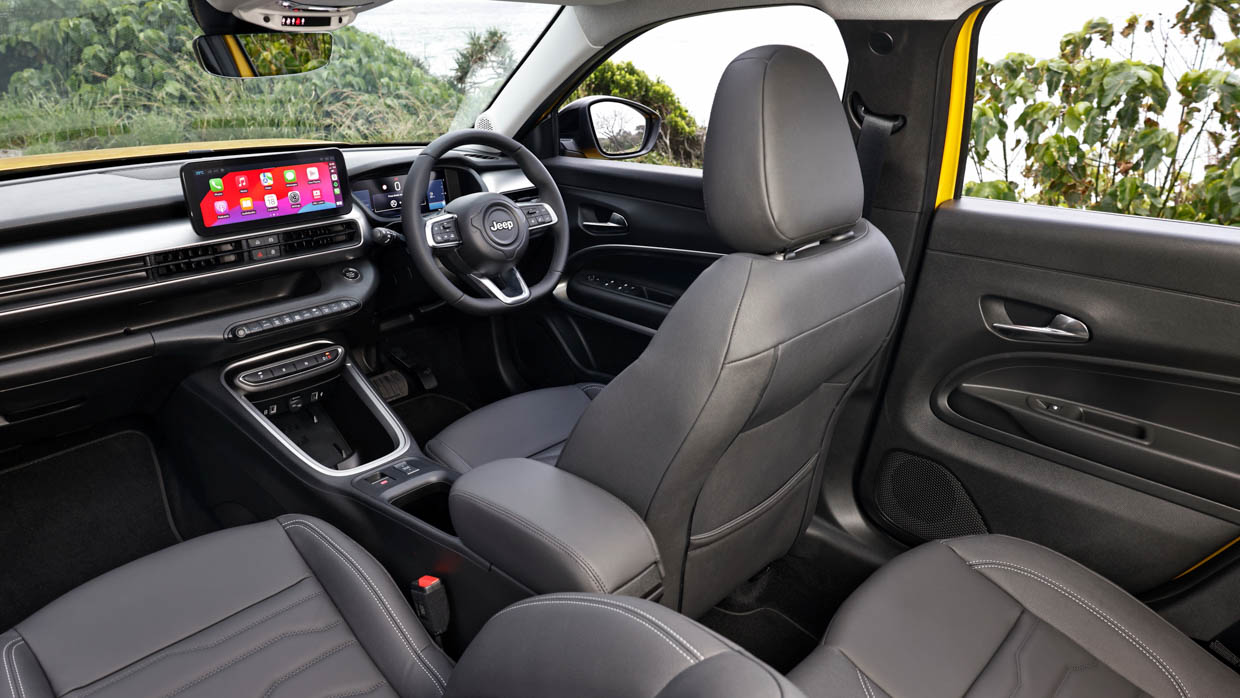
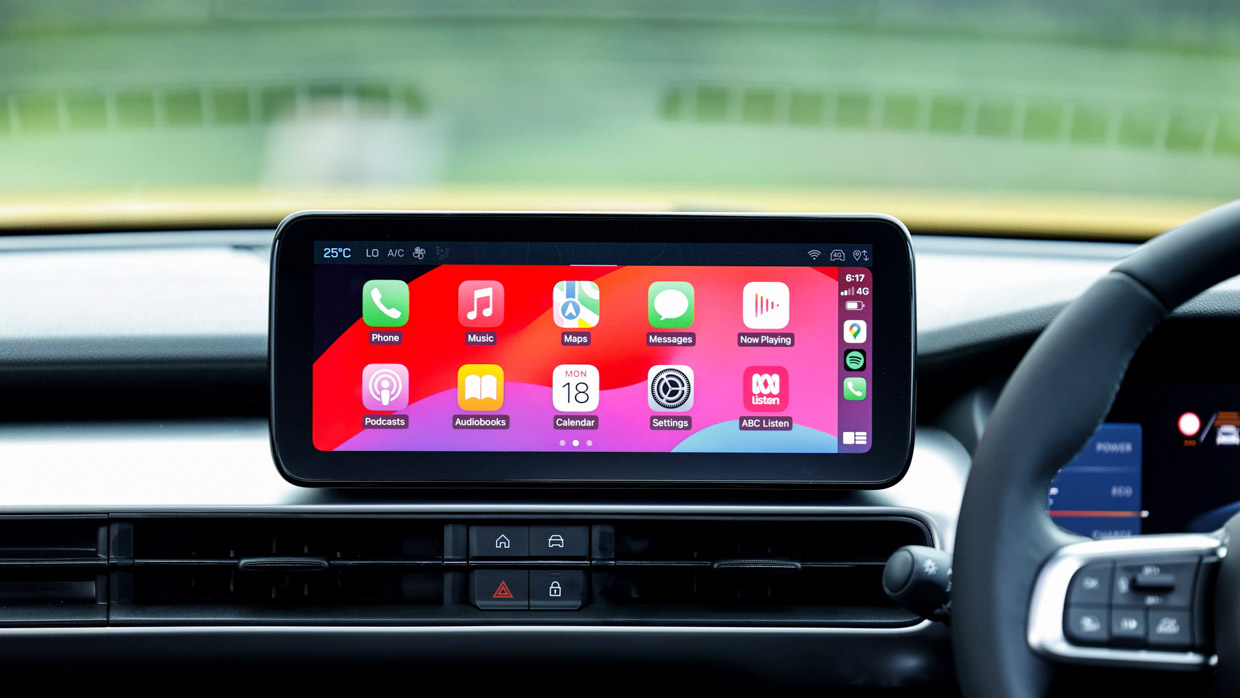
Inside, the Avenger design is straightforward, Jeep-like-boxy and downright charming. All variants get the same dual-10.25-inch display and media combination, and what each screen lacks in Germanic slickness they easily compensate for in crisp content legibility and fast processing speed. It’s a fair rung up from some Chinese rivals’ cheap junk.
In fact, the simple HVAC array, and Fiat-like push-button ‘direction chooser’ (aka, a transmission selector if it had a gearbox) and other physical controls are welcoming, logically located and intuitive to use. Cabin UI doesn’t have to confound, as the Avenger proves.
Jeep boasts about cabin storage and there’s ample, including a huge handbag friendly console cubby with magnet lid, though the phone slot in the dash fascia ought to be rubberised to stop your phones and oddment flying about during cornering.
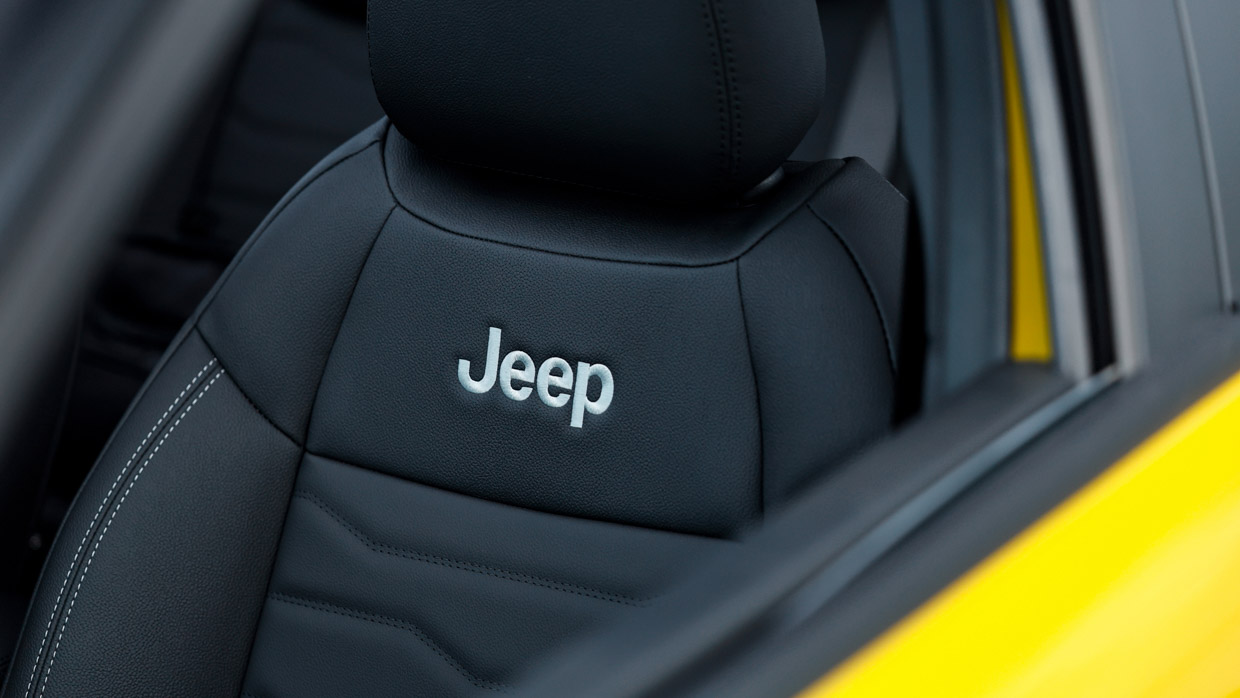
The seats are comfy and offer decent lateral support, and the Summit is the only grade to elevate beyond cloth to leather appointments. That only the driver’s pew feature electric adjustment at this price is a bit of a cop-out.
Row one is impressively airy and quite roomy for the Avenger’s compact size, exacerbated by the standard-fit half-glass roof. But the clever packaging smarts at play on really reveal themselves once you climb into row two…
Let’s face it: if you’re expecting proper four- (let alone five-) adult spaciousness in a vehicle measuring barely four metres in overall length, you’re being either unreasonable or delusional. And yet, the Avenger does provide realistic of cosy four-up accommodation, without masochistic contortionism required.
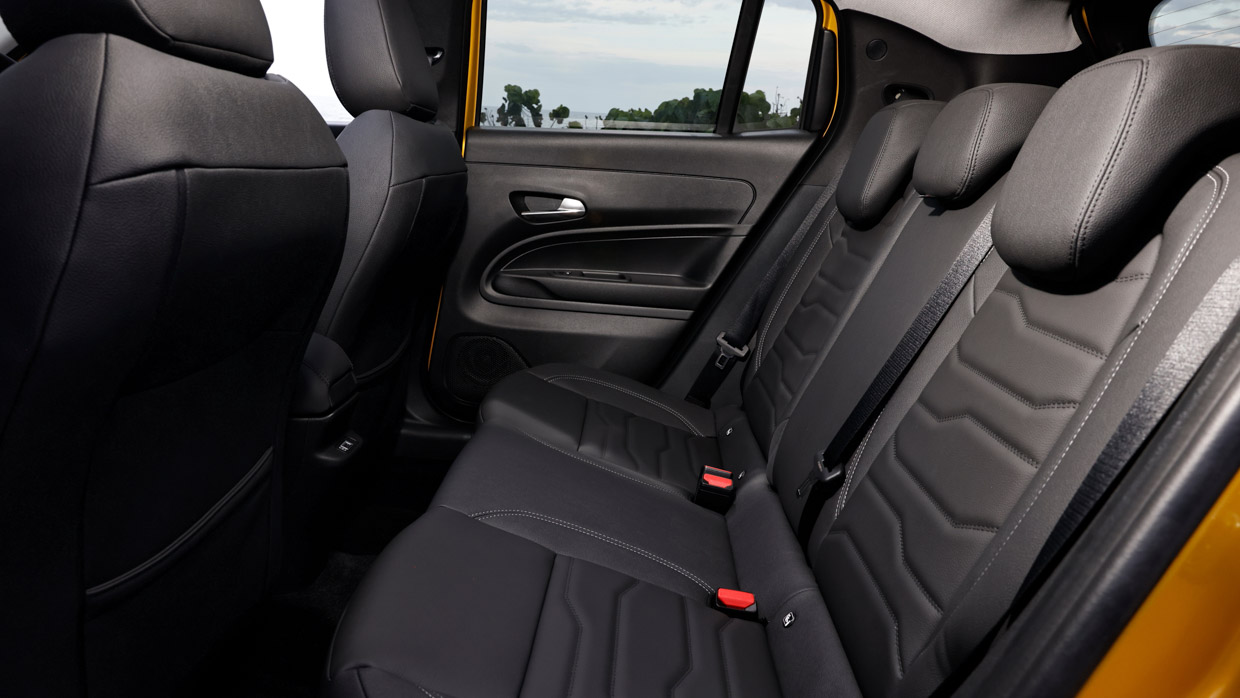
Designers have scooped the ceiling and front seatbacks – my 178cm frame had ample clearance in both directions. But the absence of battery under the floor and clear care in rear bench shapeliness returns genuine adult-friendly comfort and support…or as much as could reasonably be expected for this vehicle class. Nice work, Jeep.
Jeep also quotes 355 litres of bootspace and it’s a fairly usable repository with a false floor hiding a cubby for the CCS Type 2 charging cable. Unsurprisingly, there’s no spare wheel, but you do get a goo kit.
Overall, Jeep really has managed to get so much of its electric newcomer right where so many small-stature EVs continue to score multiple own-goals. But for the flagship Summit version, at least, the ever-present barrier to entry is going to be price.
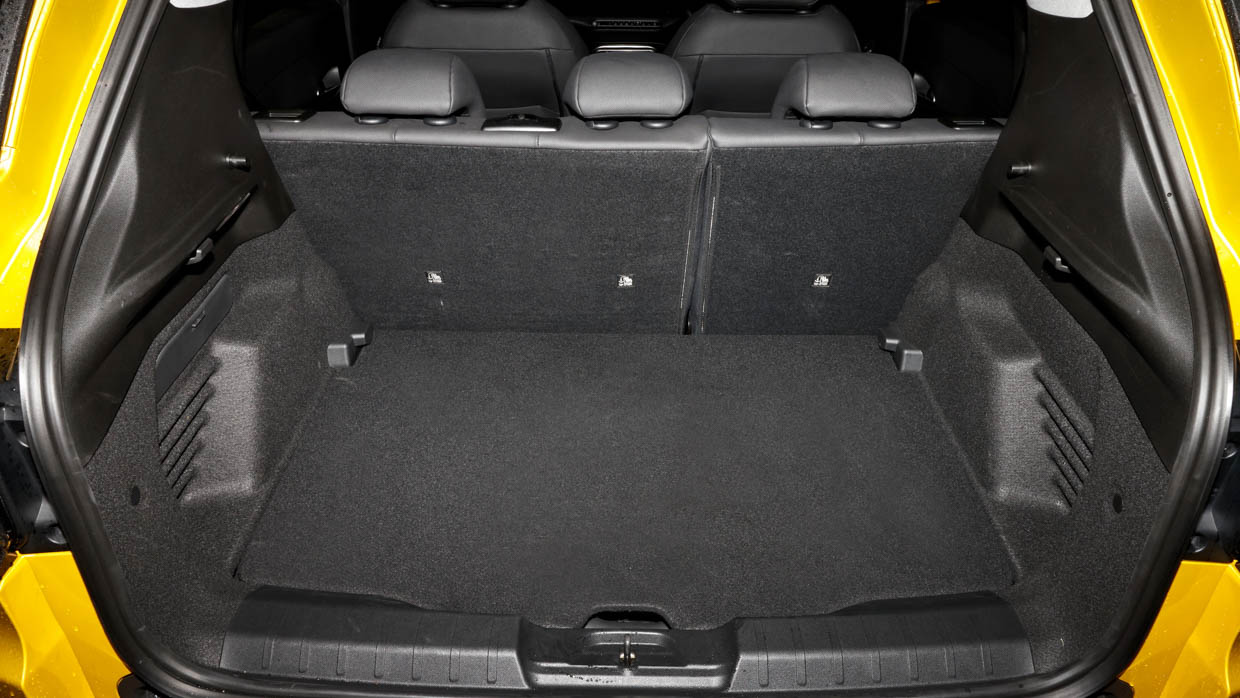
Around $66K on-road is huge money when you ignore brand, providence and potential all-terrain capability. And the jury is definitely firmly out on that last (potential) attribute.
We suspect that the further you abseil down the range from the Summit, the more enticing the Avenger becomes.
At a tenner under $50K, the basic ‘17s and cloth’ Longitude spec still fits the same chassis and powertrain (albeit with a smaller 7kW rather than 11kW onboard charger), and same dual-10.25 digital screen combo, as the two higher-grade variants.
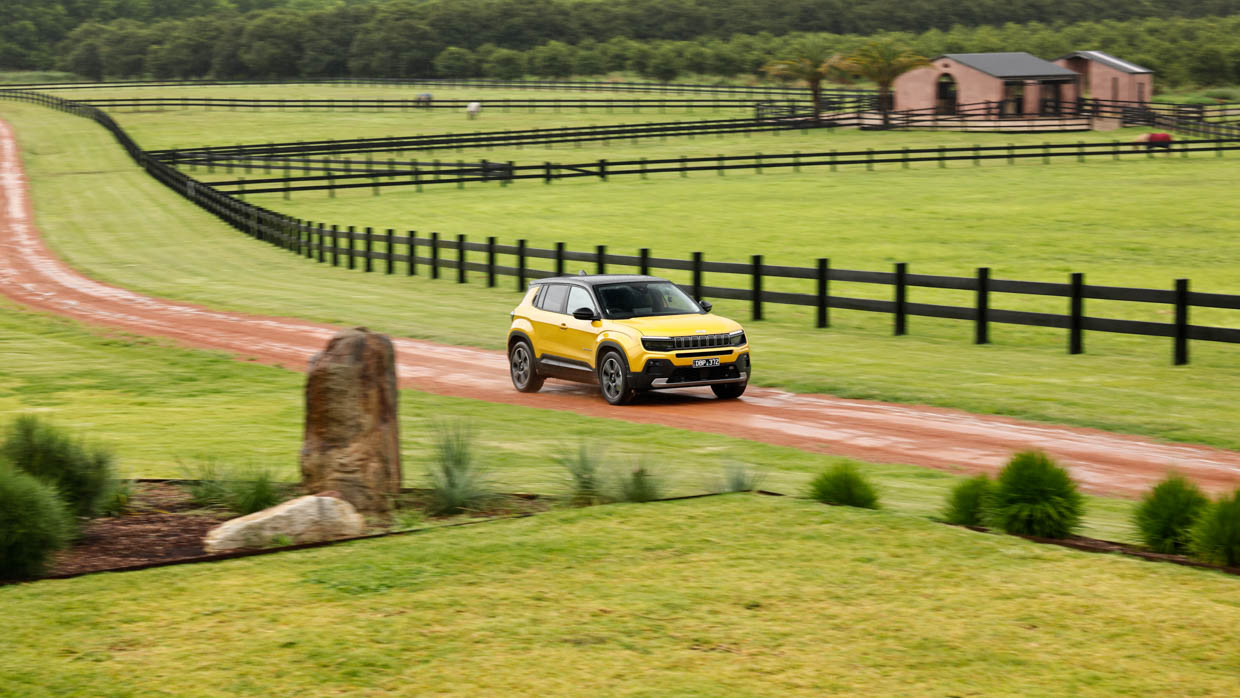
Some nice inclusions such as proprietary sat-nav and adaptive cruise control help sidestep potential rental car vibes.
We can’t help thinking that perhaps three variants are about two too many for Jeep’s electro toe in the water. And that maybe there might be some extra fat in pricing that could be further trimmed away, especially high up in the range where the Avenger is priced against an awful lot of larger and sometimes fruitier EV alternatives.
About Chasing cars
Chasing Cars reviews are 100% independent.
Because we are powered by Budget Direct Insurance, we don’t receive advertising or sales revenue from car manufacturers.
We’re truly independent – giving you Australia’s best car reviews.
The estimate provided does not take into account your personal circumstances but is intended to give a general indication of the cost of insurance, in order to obtain a complete quote, please visit www.budgetdirect.com.au. Estimate includes 15%^ online discount.
^Conditions Apply
Budget Direct Insurance arranged by Auto & General Services Pty Ltd ACN 003 617 909(AGS) AFSL 241 411, for and on behalf of the insurer, Auto & General Insurance Company Limited(ABN 42 111 586 353, AFSL 285 571).Because we don’t know your financial needs, we can’t advise you if this insurance will suit you. You should consider your needs and the Product Disclosure Statement before making a decision to buy insurance. Terms and conditions apply.
Indicative quote based on assumptions including postcode , 40 year old male with no offences, licence suspensions or claims in the last 5 years, a NCD Rating 1 and no younger drivers listed. White car, driven up to 10,000kms a year, unfinanced, with no modifications, factory options and/or non-standard accessories, private use only and garaged at night.
^Online Discounts Terms & Conditions
1. Discounts apply to the premium paid for a new Budget Direct Gold Comprehensive Car Insurance, Third Party Property Only or Third Party Property, Fire & Theft Insurance policy initiated online on or after 29 March 2017. Discounts do not apply to optional Roadside Assistance.
2. Discounts do not apply to any renewal offer of insurance.
3. Discounts only apply to the insurance portion of the premium. Discounts are applied before government charges, taxes, levies and fees, including instalment processing fees (as applicable). The full extent of discounts may therefore be impacted.
4. We reserve the right to change the offer without notice.